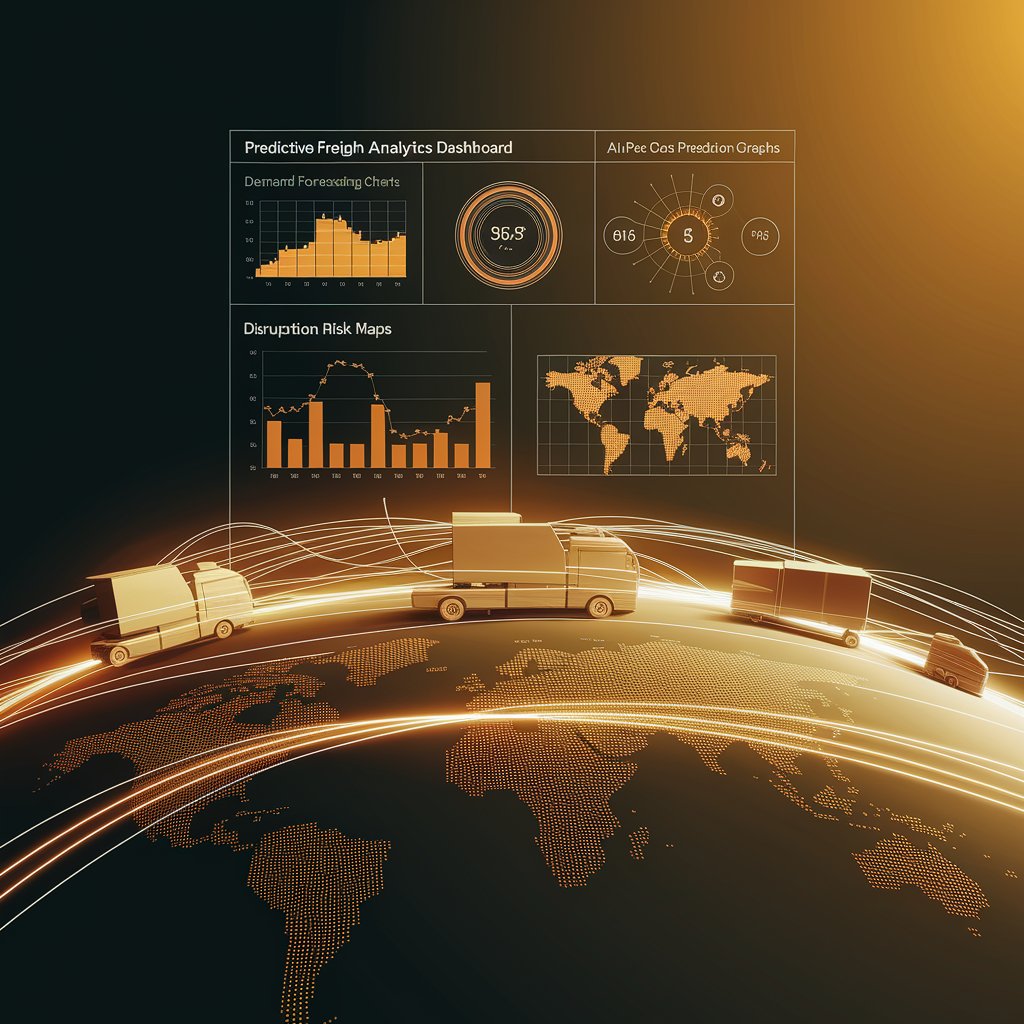Predictive Freight Analytics: Anticipating Logistics Challenges Before They Happen

Introduction
That’s where predictive freight analytics comes in. By leveraging artificial intelligence, machine learning, and real-time data, logistics companies can forecast demand, anticipate disruptions, and optimize freight flows before issues occur.
What Is Predictive Freight Analytics?
Predictive freight analytics refers to the use of AI-powered models and big data to forecast future logistics events. These platforms analyze historical freight patterns, real-time signals, and external factors—such as weather, congestion, or geopolitical risks—to generate actionable predictions.
Unlike traditional analytics, which are reactive, predictive analytics is proactive, enabling logistics providers to shift from firefighting to strategic planning.

Key Features of Predictive Freight Analytics
- Demand Forecasting – Predict shipment volumes across routes, modes, and regions.
- Disruption Prediction – Identify risks from port congestion, strikes, or severe weather.
- Dynamic Routing Suggestions – Recommend alternative routes before delays occur.
- Carrier Performance Forecasting – Evaluate potential delays from specific partners.
- Cost Prediction Models – Estimate future freight rates and surcharges.
- Integrated Dashboards – Visualize predictions across fleets, warehouses, and trade lanes.
Benefits of Predictive Freight Analytics
- Reduced Risk – Anticipate and avoid costly disruptions.
- Improved Efficiency – Align fleets, capacity, and labor with predicted demand.
- Cost Savings – Avoid detention, demurrage, and emergency shipments.
- Customer Satisfaction – Provide reliable ETAs and proactive communication.
- Strategic Planning – Support smarter pricing, contracting, and route design.
- Sustainability – Optimize routes to lower emissions and reduce waste.

Real-World Applications
- Freight Forwarders – Secure carrier space in advance using predictive demand insights.
- Carriers – Plan fleet utilization to match forecasted volumes.
- E-commerce Logistics – Anticipate seasonal spikes like Black Friday or holiday sales.
- Cold Chain Providers – Forecast demand for temperature-controlled containers.
- Global Shippers – Manage procurement and cross-border flows with predictive insights.
Challenges in Predictive Freight Analytics
- Data Quality Issues – Inaccurate or incomplete data weakens forecasts.
- Integration Barriers – Legacy ERP, WMS, and TMS platforms may not share data easily.
- High Costs – Advanced AI forecasting tools require investment.
- Unpredictable Global Events – Pandemics or wars may defy even the best models.
- Cultural Resistance – Teams may hesitate to trust AI-driven predictions.

Best Practices for Success
- Start with High-Impact Use Cases – Apply predictive analytics to major trade lanes.
- Prioritize Data Cleanliness – Ensure accurate, standardized shipment and cost data.
- Integrate Across Systems – Connect predictive models with TMS, WMS, and ERP.
- Use Scenario Planning – Test best- and worst-case freight scenarios.
- Combine AI with Human Oversight – Planners validate and fine-tune AI insights.
- Measure ROI Continuously – Track cost savings, service levels, and forecast accuracy.
The Future of Predictive Freight Analytics 🚀
- AI-Enhanced Digital Twins – Simulate freight networks to test future flows.
- Blockchain-Verified Forecasting – Secure and transparent predictive data.
- Collaborative Predictive Platforms – Shared forecasting across shippers and carriers.
- Autonomous Freight Predictions – AI systems making self-correcting adjustments.
- Green Freight Forecasting – Balancing efficiency with sustainability targets.
Conclusion
Predictive freight analytics is transforming logistics from a reactive industry into a proactive one. By anticipating demand, risks, and costs, companies can improve service, cut expenses, and build resilience in their supply chains.
For freight forwarders, carriers, and shippers, adopting predictive freight analytics isn’t just about efficiency—it’s about staying competitive in a volatile global market.
